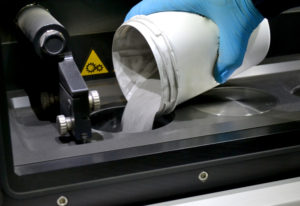September 10, 2019
Christopher Daase, Grant Christopher, Ferenc Dalnoki-Veress, Miles Pomper, and Robert Shaw
Additive Manufacturing (AM)—also known as 3D printing—is a rapidly emerging technology with growing relevance for the proliferation of weapons of mass destruction (WMD) and their means of delivery. The rapid pace of AM development makes it increasingly difficult to keep track of AM’s potential effect on proliferation pathways.

Additive manufacturing (src: Shutterstock)
So far, studies addressing the issue have mainly focused on nuclear proliferation. This has created two major problems for policy makers. First, by the time governments are able to respond to specific AM-induced proliferation risks, those risks might already have been overtaken by newer developments. Second, by focusing on nuclear proliferation pathways, governments can fail to recognize AM’s relevance to other proliferation modalities, including chemical and biological weapons and, especially, the means of WMD delivery.
This report addresses these shortcomings. As an innovative pilot study, this report provides a more comprehensive approach toward explaining latest AM developments and mitigating the risk of WMD proliferation. Effectively, this report is the first beyond-the-horizon assessment of the impact of AM developments not only on potential nuclear-weapons programs, but also on other WMD modalities and their delivery systems.
For this project, Negotiation Design & Strategy (NDS) assembled an expert team of well-known AM and nonproliferation specialists from Germany, the United States, and the United Kingdom—three countries at the forefront of AM development. The research team’s contextual knowledge of AM facilities in Europe and the United States allowed for in-depth, on-the-ground interviews with US and European experts from the private sector, national laboratories, and research institutions. Interviews were augmented with an analytical deep dive into the latest AM developments, based on open-source technical literature, including academic papers and patents.
The final report allows us to better forecast technological developments and raise awareness for the critical role that AM plays in international security. This report also demonstrates the importance of emerging technologies in the nonproliferation field and underscores the need for further research of this kind. Studies such as this are crucial to inform the broader examination of the relationship between technology and international security.
This report is based on research funded by the Defense Threat Reduction Agency (DTRA) and sponsored by the United States Air Force Academy Institute for National Security Studies (INSS) through the Project on Advanced Systems and Concepts for Countering Weapons of Mass Destruction (PASCC) under agreement number FA7000-18-1-0018.
